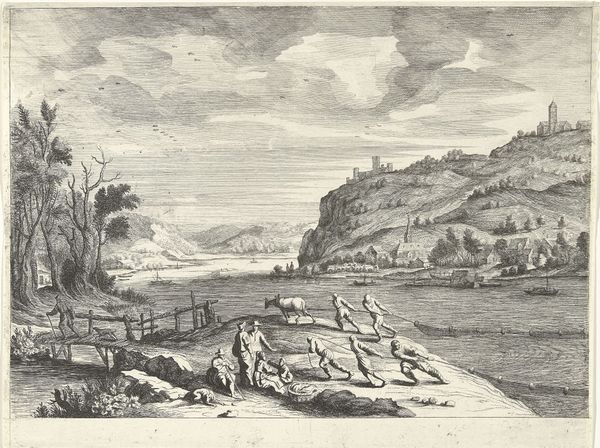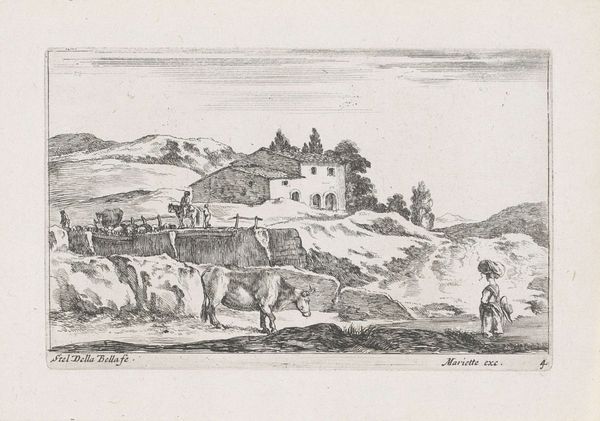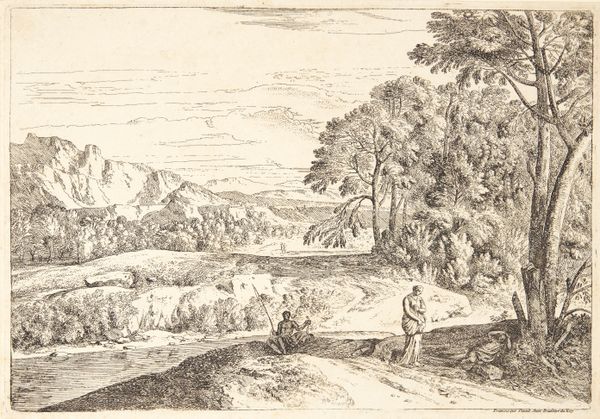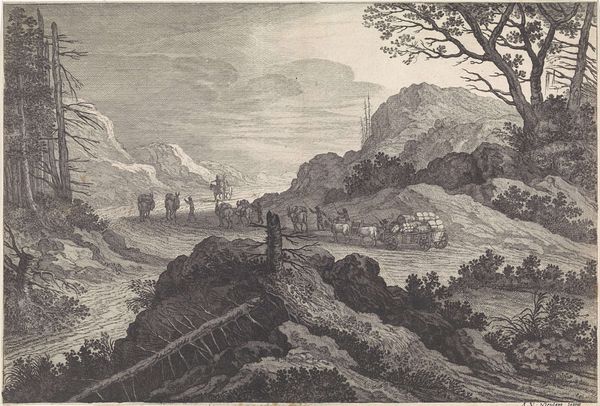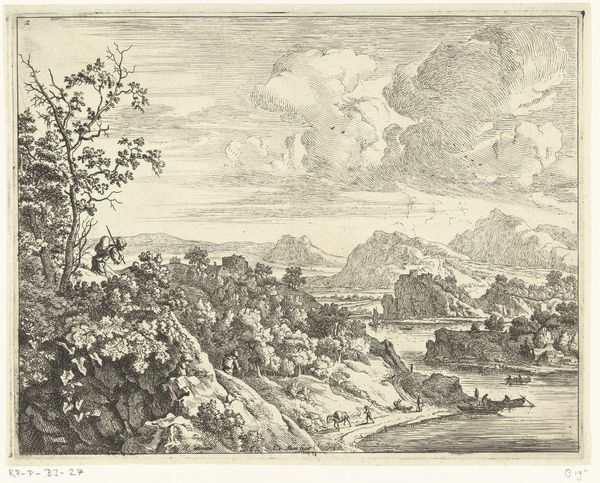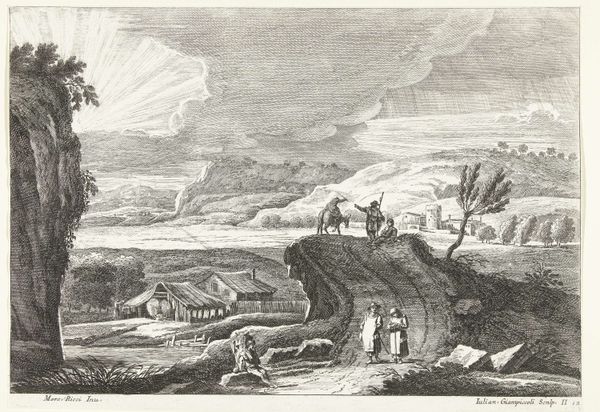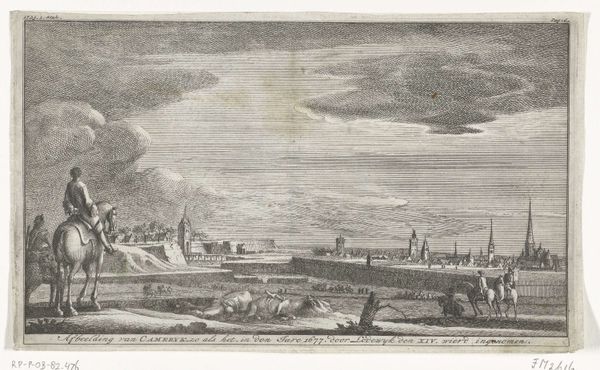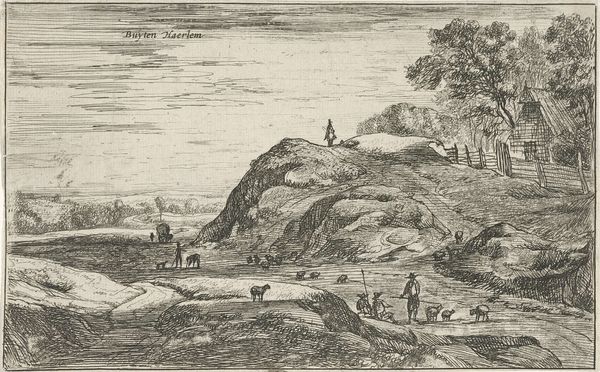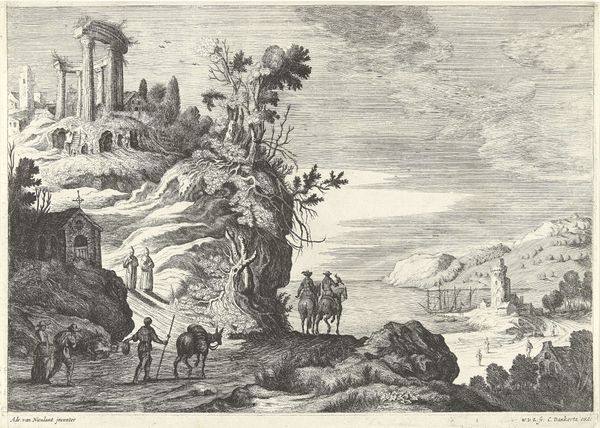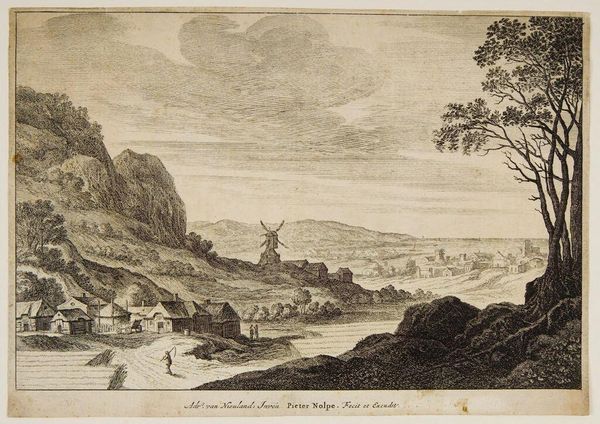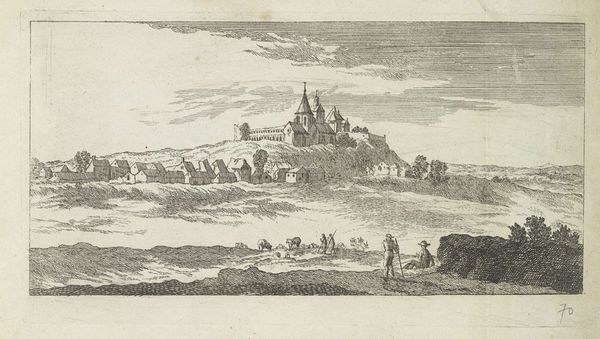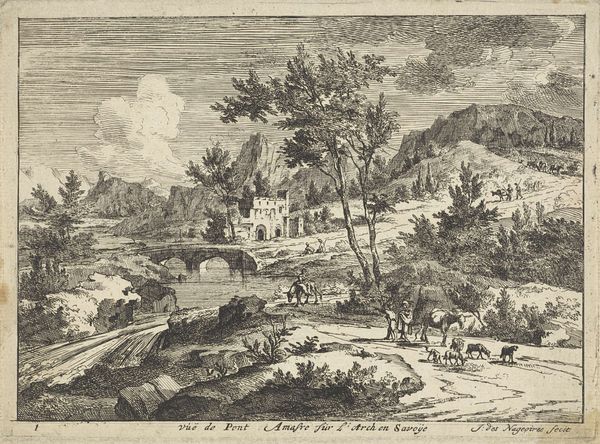
drawing, ink, engraving
#
drawing
#
baroque
#
dutch-golden-age
#
pen sketch
#
landscape
#
ink
#
ink drawing experimentation
#
genre-painting
#
engraving
Dimensions: height 283 mm, width 383 mm
Copyright: Rijks Museum: Open Domain
Curator: This captivating ink and engraving drawing is titled "Italian Coastal Landscape," believed to have been created between 1635 and 1650 by Willem van Lande. It evokes a compelling atmosphere, doesn't it? Editor: It certainly does. Immediately, I see a pastoral scene suffused with a kind of nascent longing. There's a quaint village nestled at the base of a hill near the water, with figures who appear as though they might soon embark on a journey. Curator: I agree. The depiction of everyday life is key here; you can really see Van Lande responding to the growing urban centers in the Netherlands by creating idealized images of nature and leisure. Images that promoted the commercial possibilities of their landscape painting and printmaking on a European stage. Editor: And what's remarkable to me is how these detailed images also subtly carry deeper symbolic weights. Notice the compositional positioning of those foreground travelers. Their posture directs our eye straight towards the radiant burst of the rising, or setting, sun. Curator: An interesting detail. Such carefully constructed elements speak to a desire for audiences, perhaps those who knew about or experienced the devastation of plague in the major centers, to enjoy an escapist fantasy of nature and small scale labor, with all its social complexities removed or idealized. Editor: Yes, the simplification is key. Note, also, how nature itself is presented almost as a stage set: those meticulously placed trees on the left act as visual anchors, grounding the rest of the imagined Italian panorama for our eyes. They evoke something deeper for the mind as a viewer: the natural world offering solace from earthly suffering, for which these laborers may well be rewarded in the life beyond if their Christian service to the landscape is faithfully practiced. Curator: You know, by imbuing the work with such potential allegorical or even biblically inspired undertones, van Lande was ensuring the painting appealed to diverse tastes across social classes and religious beliefs during a tumultuous historical period. Editor: Absolutely, these landscapes go beyond mere surface representations. It is the perfect meeting between place and feeling. The work becomes something akin to a complex mirror, reflecting culture as a promise of salvation. Curator: A really fascinating analysis. It reminds us to see artworks such as these, no matter their surface simplicity, as documents deeply shaped by socio-economic realities, far removed from any romantic visions of rural life. Editor: Exactly! The most apparently simplistic scenes can become richly resonant windows into human history when viewed from a thoughtful and informed perspective.
Comments
No comments
Be the first to comment and join the conversation on the ultimate creative platform.
